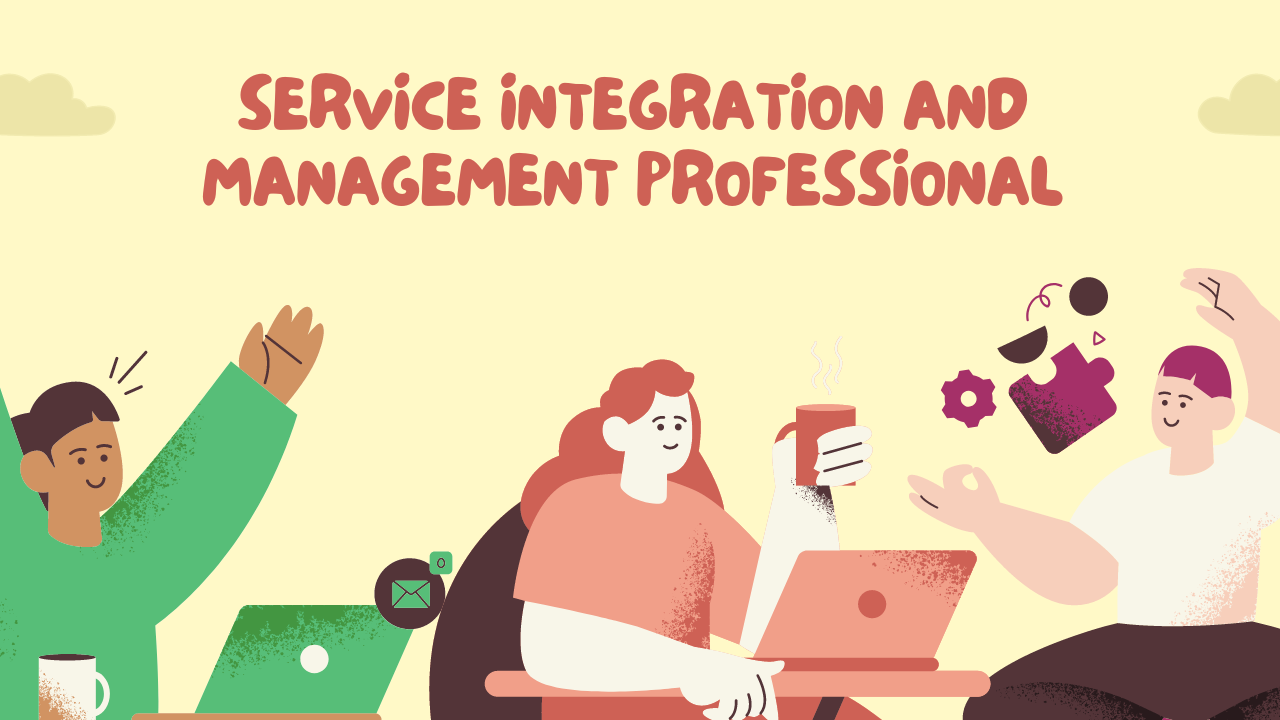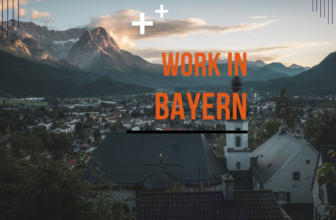
This is where Service Integration and Management Professional (SIAM) comes into play when complex digital landscape, businesses face a myriad of challenges in managing their IT services efficiently.
SIAM offers a structured approach to integrating and managing multiple service providers, ensuring seamless operations and improved service delivery.
By becoming SIAM certified, you equip yourself with the skills needed to navigate these challenges effectively, making you an invaluable asset to any organization striving for operational excellence in the digital age.
1. Understanding the Basics
So, you’ve heard about Service Integration and Management Professional (SIAM) and traditional IT Service Management (ITSM) frameworks like ITIL – but what’s the difference? Let’s break it down for you! ITIL, or Information Technology Infrastructure Library, is a set of best practices for managing IT services, focusing on processes and workflows. On the other hand, SIAM is all about integrating multiple service providers to deliver seamless end-to-end services. While both aim to improve service delivery, they have distinct approaches and objectives.
2. The Traditional vs. the Modern
Think of ITIL as the tried-and-true grandfather of IT service management – reliable, structured, and time-tested. It provides a comprehensive framework for managing IT services, covering everything from incident management to change control. However, in today’s fast-paced digital landscape, businesses are increasingly turning to SIAM for a more agile and flexible approach. SIAM embraces the complexity of multi-vendor environments, offering a holistic view of service delivery across the entire ecosystem.
3. Embracing Complexity with SIAM
So, what sets SIAM apart from traditional ITSM frameworks like ITIL? The answer lies in its ability to navigate complexity with ease. In a world where organizations rely on multiple service providers – from cloud providers to SaaS vendors – SIAM acts as the glue that holds everything together. It provides a unified framework for managing relationships, ensuring seamless collaboration, and delivering value to the business. With SIAM, you can say goodbye to silos and hello to integrated service delivery.
4. Making the Choice
Now that you have a better understanding of SIAM and how it contrasts with traditional ITSM frameworks like ITIL, it’s time to consider which approach is right for you. If you’re looking for a structured and proven framework for managing IT services, ITIL may be the way to go. However, if you operate in a complex multi-vendor environment and need a more flexible and agile approach, SIAM could be the answer. Ultimately, the choice depends on your organization’s unique needs and goals.
5. Addressing Challenges Head-On
While SIAM offers numerous benefits, it’s not without its challenges. One of the biggest hurdles organizations face when implementing SIAM is cultural resistance. Transitioning from a traditional ITSM mindset to a more collaborative and integrated approach can be daunting. It requires buy-in from stakeholders across the organization and a willingness to embrace change. Additionally, managing relationships with multiple service providers can be complex, requiring robust governance structures and clear communication channels. However, with the right strategy and support, these challenges can be overcome, paving the way for a successful SIAM implementation.
6. The Role of Certification
As the demand for SIAM expertise grows, so does the importance of certification. Obtaining a Service Integration and Management Professional (SIAM) certification demonstrates your proficiency in implementing and managing SIAM practices. It validates your skills and knowledge in areas such as service integration, supplier management, and service governance. Whether you’re an IT professional looking to advance your career or an organization seeking to build internal SIAM capabilities, certification can be a valuable asset.
The Role of SIAM in Managing Multi-Supplier Environments
1. Simplifying Complexity with SIAM
In today’s digital landscape, many organizations rely on multiple suppliers to deliver various IT services. However, managing these diverse suppliers can be challenging, often leading to inefficiencies, overlaps, and conflicts. This is where Service Integration and Management Professional (SIAM) steps in to save the day. SIAM provides a structured framework for integrating and managing multiple service providers seamlessly. By implementing SIAM, you can streamline operations, improve service quality, and enhance overall efficiency.
2. The Core Functions of SIAM
At the heart of SIAM lies its core functions, which include service integration, service management, and supplier management. Service integration involves coordinating and integrating services from various suppliers to ensure seamless delivery to the end-users. Service management focuses on overseeing and optimizing the delivery of these integrated services, ensuring they meet the agreed-upon standards and objectives. Supplier management, on the other hand, entails managing relationships with individual service providers, ensuring they deliver according to the agreed-upon terms and conditions.
3. Navigating the Complexities of Multi-Supplier Environments
In multi-supplier environments, organizations often face a myriad of challenges, including communication gaps, conflicting priorities, and accountability issues. SIAM addresses these challenges by providing a centralized governance model that facilitates collaboration and alignment among all stakeholders. By establishing clear roles, responsibilities, and communication channels, SIAM ensures that everyone is on the same page, working towards common goals. Additionally, SIAM helps organizations proactively manage risks and mitigate potential issues before they escalate, ensuring smooth operations across the board.
How SIAM Addresses the Complexities of Modern IT Service Delivery
1. Streamlining Service Delivery with SIAM
Navigating the complexities of modern IT service delivery can feel like trying to untangle a bundle of wires. With the ever-growing complexity of IT environments, organizations face numerous challenges, from managing multiple suppliers to ensuring seamless service integration. However, Service Integration and Management Professional (SIAM) comes to the rescue! SIAM provides a structured approach to streamline service delivery, bringing order to the chaos and making your life as an IT professional much easier.
2. Tackling the Challenges Head-On
Picture this: you have different service providers handling various aspects of your IT infrastructure, from cloud services to network management. Each provider operates independently, following its own processes and protocols. This can lead to communication breakdowns, service overlaps, and inconsistencies, making it challenging to maintain a cohesive IT environment. But fear not! SIAM acts as the glue that binds everything together, ensuring seamless collaboration and integration across all service providers. With SIAM in place, you can bid farewell to the headaches of managing multiple suppliers and hello to a well-oiled IT machine.
3. Embracing Change and Innovation
In today’s fast-paced digital world, change is the only constant. New technologies emerge, business requirements evolve, and customer expectations shift. As an IT professional, staying ahead of the curve is crucial. Fortunately, SIAM is not just about maintaining the status quo; it’s about embracing change and fostering innovation. By providing a flexible and adaptable framework, SIAM enables organizations to embrace new technologies, adapt to changing business needs, and deliver innovative solutions to their customers. With SIAM by your side, you can confidently navigate the ever-changing landscape of modern IT service delivery.
Case Studies Illustrating the Impact of SIAM Adoption on Organizations
1. Transforming Troubles into Triumphs: The SIAM Success Stories
Imagine the chaos of managing multiple IT suppliers, each pulling in different directions like a team of rowers rowing out of sync. That’s where SIAM steps in, turning chaos into harmony. Let’s dive into some real-life examples of organizations that have embraced SIAM and witnessed remarkable transformations.
2. From Fragmentation to Unity: Company X’s SIAM Journey
Company X, a global tech conglomerate, was struggling to maintain coherence across its diverse IT landscape. With different departments and suppliers operating independently, service delivery was fragmented, resulting in delays and inefficiencies. Enter SIAM! By implementing SIAM principles, Company X achieved a unified approach to service management. With streamlined processes and improved collaboration among suppliers, they reduced service disruptions and enhanced customer satisfaction. Now, instead of rowing in different directions, they’re all rowing together towards success!
3. Riding the Waves of Change: Organization Y’s SIAM Experience
Organization Y, a leading financial institution, faced the daunting task of modernizing its IT infrastructure while ensuring seamless service delivery. However, managing multiple vendors and integrating new technologies proved to be a Herculean task. That’s when they turned to SIAM for help. By adopting SIAM practices, Organization Y gained better control over its IT environment. They successfully implemented new technologies, such as cloud computing and automation, while maintaining high service standards. With SIAM as their guiding compass, they navigated the turbulent waters of IT transformation with ease.
4. A Symphony of Success: The SIAM Symphony Orchestra
Even in the world of music, SIAM shines bright! The SIAM Symphony Orchestra, a fictional but fun example, illustrates the power of collaboration and integration. Imagine each musician as a different IT supplier, playing their part in perfect harmony under the conductor’s baton—SIAM. From the strings of infrastructure management to the brass of application support, SIAM ensures that every note blends seamlessly together, creating a symphony of success.
5. SIAM—Your Ticket to Organizational Harmony
These case studies demonstrate the tangible benefits of embracing SIAM in today’s complex IT landscape. Whether you’re a global corporation or a local business, SIAM offers a roadmap to streamline service delivery, enhance collaboration, and drive business success. So, if you’re tired of juggling multiple suppliers and longing for harmony in your IT operations, it’s time to hop aboard the SIAM train and embark on a journey towards organizational excellence.
Unlock boundless opportunities with Bridge Purple – your ultimate destination for transformative courses and career advancement! Take the leap towards your professional dreams by redirecting to our Courses Link:- page, where a wealth of knowledge awaits.
Whether you’re seeking to upskill, reskill, or embark on a new career path, Bridge Purple is your trusted guide across the bridge to success.
Explore our curated selection of courses and recruitment opportunities today, and pave the way for a brighter tomorrow







